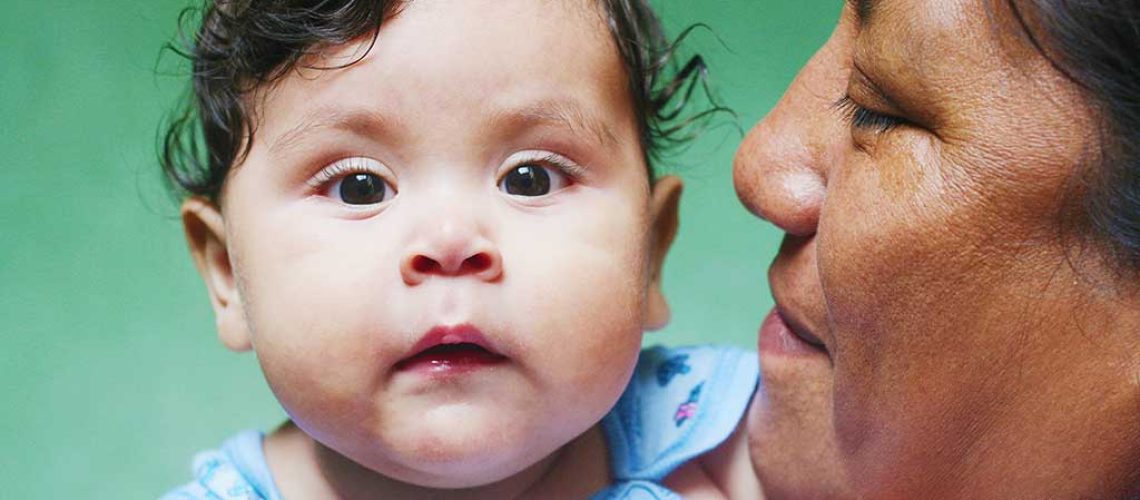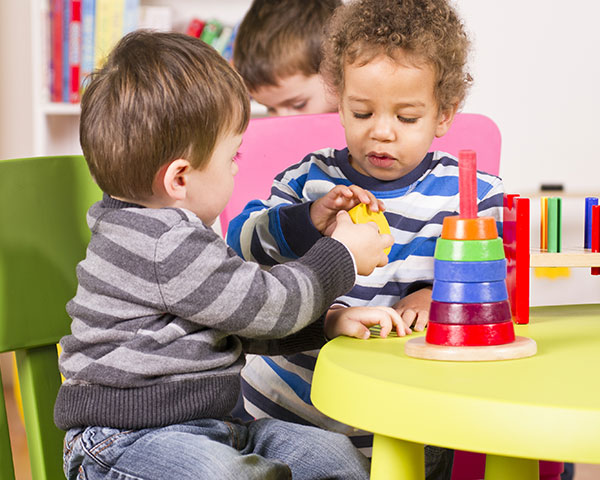Practices and Activities to Foster Indigenous Language Development
· Children learn language best in a language-rich environment.
· Early learning and child care practitioners should find out what languages are spoken at home so that they are aware of how much the child has been exposed to her Indigenous language. It is important to note that not all parents are fluent in their Indigenous language.
· Communicate with families in their preferred language.
· Involve parents and promote family participation in language-based activities in the early learning and child care setting so that they will understand the methods used to encourage acquisition of the Indigenous language, and may decide to adapt them in the home environment.
· Mixing languages is a normal part of language development for many children who are learning two languages. Children learning a second language should be encouraged to experiment.
Discover our Indigenous Child Care topic area
Opportunities to use Indigenous languages:
· Try to use Indigenous language throughout the day in your program, rather than just during a particular activity. Speak the Indigenous language during routines and transitions.
· Use some phrases in Indigenous language with each new activity that is planned.
· Learning songs is a fun way to become comfortable with the sounds and pronunciation of words.
· Play traditional games and make traditional crafts to hear and use the Indigenous words associated with these activities.
· Model language use through storytelling and recounting legends.
· Organize activities that allow children to explore nature and to use Indigenous words to describe the things they observe.
· Bring photos of cultural activities and community events to circle time and discuss what is happening in them.
· Children learn best by building on familiar experiences, so help them name their clothes, and talk with them about toys, other familiar objects and daily activities. Try not to just name objects for the children, but instead encourage an exchange by asking them to say what they think the object is called, or to talk about what it is used for.
· Ask children to use Indigenous words to describe how they are moving during a physical activity, e.g. moving quickly like a rabbit, slowly like a turtle, or slithering like a snake.
· Explore the senses. Using the Indigenous language, talk about how things look, feel, smell, taste, and sound.
· Identify play areas and materials in Indigenous languages to expose children to the written form of the languages. Provide books written in Indigenous languages.
· Ask parents to provide some family photographs and then ask the children to talk about what is happening in the photographs, using their Indigenous language. Write down what they say so that you create a personalized book together.
· Younger children look up to older children, so ask older children to tell stories to the younger ones in order to model using Indigenous language.
· Serve traditional foods so that children have the opportunity to hear and use the names of these foods.
· Invite guests from the community who can speak to the children in their Indigenous languages. They can present cultural activities to the children such as traditional dance and dress, games, crafts, and stories that will capture the children’s attention, model language use, and help to promote cultural awareness.
References:
Ball, J. and Lewis, M. First Nations Elder’s and Parent’s
Views on Supporting Children’s Language Development.
School of Child and Youth Care, University of Victoria.
Bradley, Jennifer and Kibera, Peris. (2006) Closing the
Gap – Culture and the Promotion of Inclusion in Child Care.
Young Children. pp. 34-40.
Burns, M.S. and Stechuk, Robert A. (2005) Does It Matter
How Adults Use Children’s First Language and English
When They Talk to Preshoolers? Young Children. pp. 42-43.
David, Judy (EdD) et al. (2005) Head Start Embraces
Language Diversity. Young Children. November. pp. 40-43.
Drew, Ramona and Grass, Regina. (2005) Head Start:
An Avenue to Revitalize a Language. Young Children.
pp. 41-42.
Jones, Guy W. and Moomaw, Sally. Native Curriculum
in Early Childhood Classrooms. Childhood Education —
Infancy Through Early Adolescence. Winter 2005/06.
pp. 89-94.
Melvor, Onowa. (2005) The Contribution of Indigenous
Heritage Language Immersion Programs to Healthy Early
Childhood Development. Research Connections Canada,
Volume 12. Canadian Child Care Federation.
Onchonga, Onsomu. (2005) Welcome to the Sharing and
Learning Space. Young Children. November. p. 41.












